One of the most well-known attractions in Panama is the Panama Canal. It is definitely something you should see if you are ever in the country. The canal was built to significantly decrease the travel time for ships between the Atlantic and Pacific Oceans. Since its inception, the Panama Canal has served over 900,000 vessels. But how deep is the Panama Canal? Continue reading to find out.
Where is the Panama Canal?
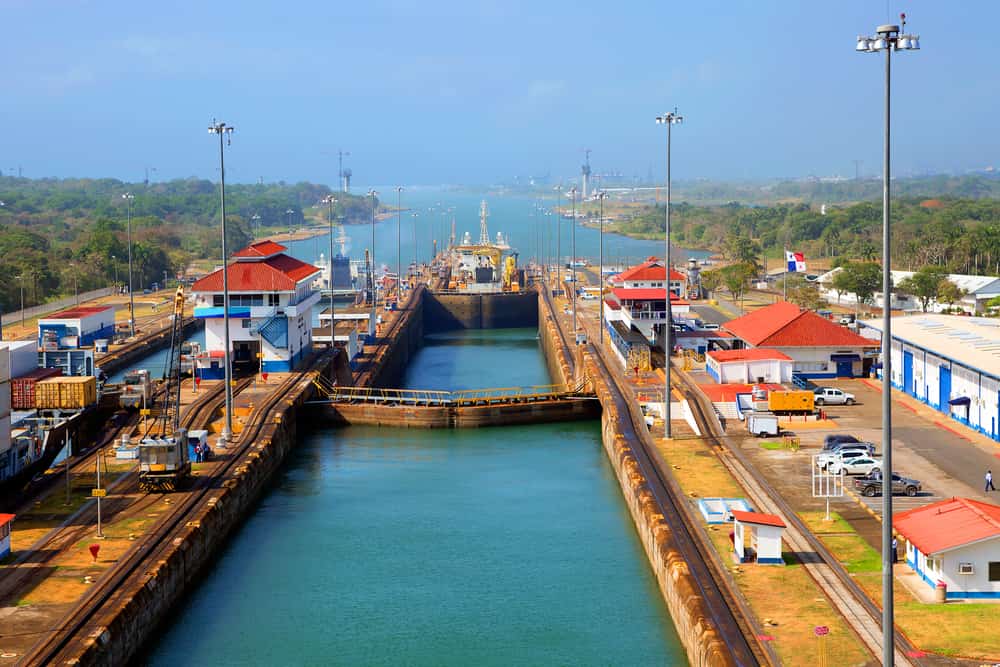
The canal is an essential tool of international shipping, using a series of man-made lakes, massive locks, and water supplied by the huge amounts of rainfall to the area to lower and lift ships 85 feet over the continental divide.
©Galina Savina/Shutterstock.com
This canal is 50 miles long and connects the Pacific Ocean to the Atlantic Ocean. The Panama Canal was officially completed in 1914, running southeastward from Colon to the Pacific side of the Isthmus through Gatun Lake, Panama. The canal is an essential tool of international shipping, using a series of man-made lakes, massive locks, and water supplied by the huge amounts of rainfall to the area to lower and lift ships 85 feet over the continental divide.
What is the Panama Canal?
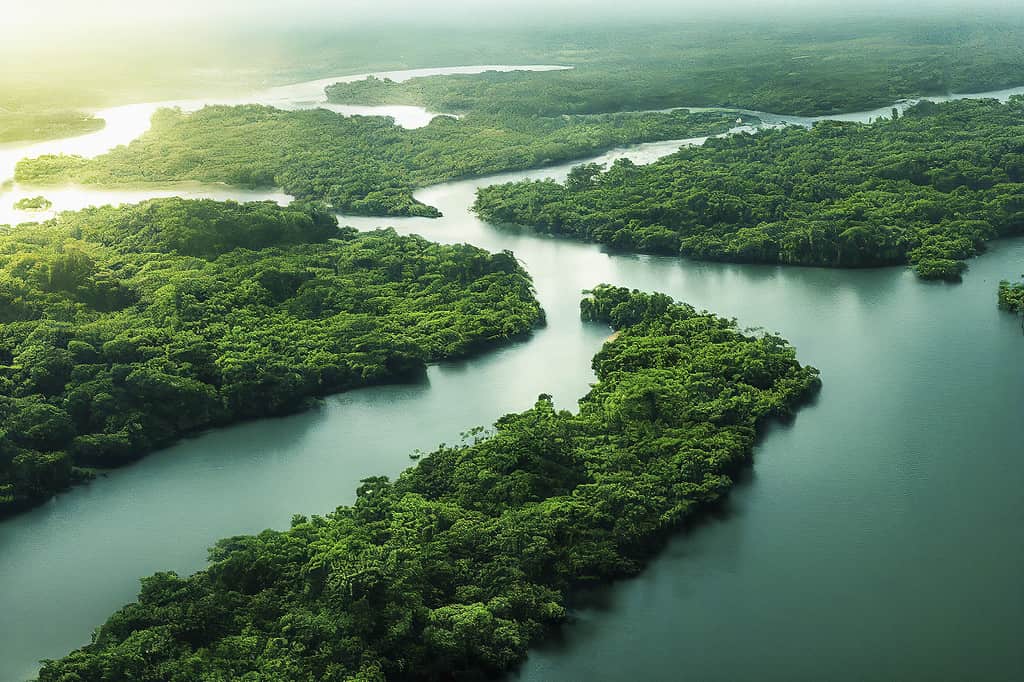
This 50-mile canal connects the Pacific and Atlantic Oceans in one of the narrowest points of the Americas.
©dani3315/iStock via Getty Images
The Panama Canal is a man-made waterway that serves as a maritime shortcut, saving ships transporting various goods a significant amount of travel time. This 50-mile canal connects the Pacific and Atlantic Oceans in one of the narrowest points of the Americas. Since the Panama Canal opened in 1914, it has accommodated over 900,000 ships worldwide. The waterway uses a network of locks with two lanes that function as lifts, raising vessels from sea level to the same elevation (85 feet above sea level) as Gutan Lake. This allows the ships to cross through the Continental Divide and lowers them to sea level.
How Was the Panama Canal Formed?
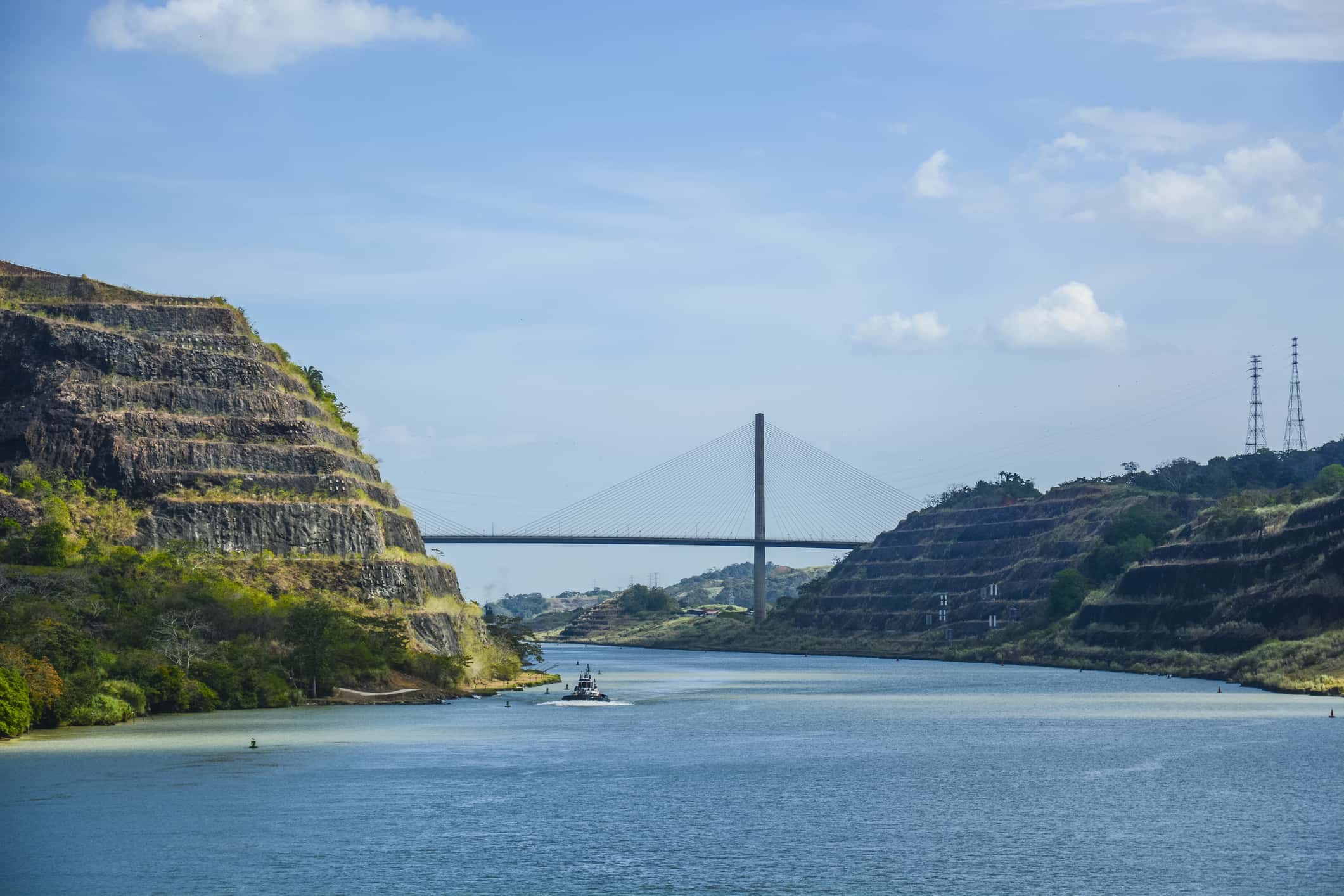
in 1903, when Panama gained its independence, they negotiated an agreement with the USA to construct the Panama Canal. The United States accepted the terms, completed the canal in 1914, and managed it until 1999.
©Lovely_Images/iStock via Getty Images
The French were the first to attempt to build a maritime route through Panama in 1880. However, due to disease and financial troubles, their initiative failed. But, in 1903, when Panama gained its independence, they negotiated an agreement with the USA to construct the Panama Canal. The United States accepted the terms, completed the canal in 1914, and managed it until 1999. Since then, Panama has taken full control of the canal from operation, maintenance, and administration.
How Deep is the Panama Canal?
How deep is the Panama Canal? The depth varies in different areas, from 46 to 85 feet deep. Under the current regulations, ships cannot exceed a maximum draft of 44 feet.
How Wide is the Panama Canal?
Like the depth of the Panama Canal, the width also varies depending on the area. For example, its narrowest point is 110 feet wide, while its widest point measures 1,000 feet.
What Animals Live in the Panama Canal?
The Panama Canal doesn’t only accommodate ships, it is also full of wildlife, including:
Capybaras
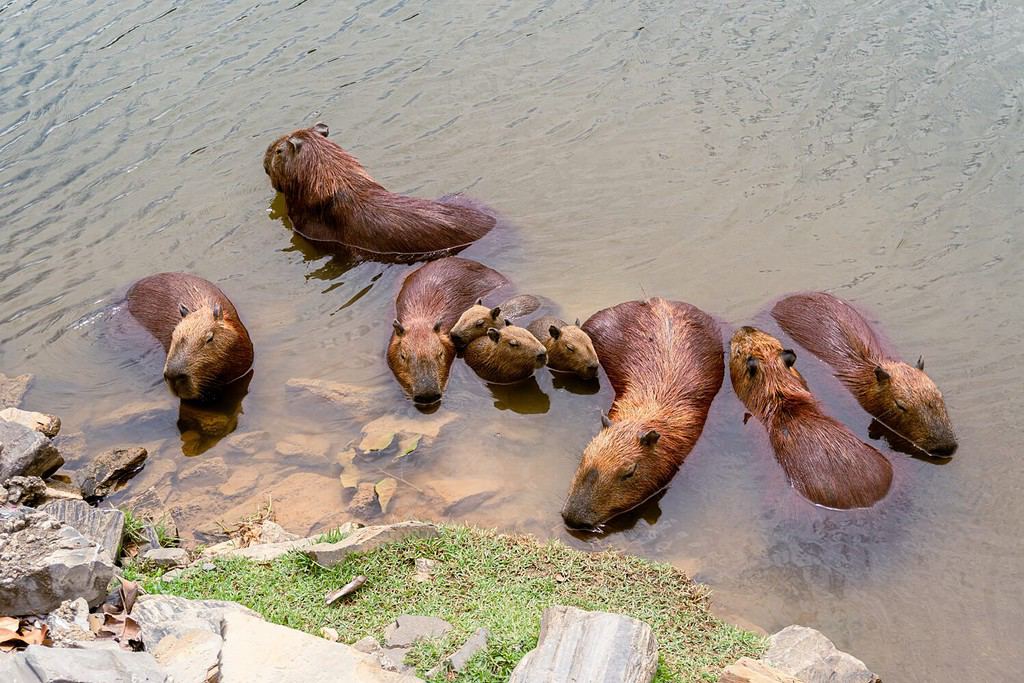
The capybara is a large rodent that lives and forages along the banks of the Chagres River. In addition, they thrive in lowland jungle beds. There are two species of capybaras, and they both occur in Panama.
©7caina lemes26/Shutterstock.com
The capybara is a large rodent that lives and forages along the banks of the Chagres River. In addition, they thrive in lowland jungle beds. There are two species of capybaras, and they both occur in Panama. The rarest of the two, the Lesser Capybara, is often sighted along the shores of the canal. Both genders can grow to 19 inches and weigh around 110 pounds. These rodents need water to survive, even though they are only semi-aquatic. Furthermore, they have webbed feet, making them agile swimmers. However, they primarily bask in the sun on the shores of lakes and rivers.
Crocodiles and Caimans

The Crocodiles and caimans in the Panama Canal are among the fiercest predators in the area, along with the elusive and rare
jaguar
.
©Ricardo de Paula Ferreira/Shutterstock.com
Large crocodiles and small caimans are frequently seen where fresh waters flow freely into the sea at the mouths of rivers. That is why it is not recommended to swim in the Panama Canal. Instead, wait until you get to the waters off the coastline of Panama before taking a dip. The Crocodiles and caimans in the Panama Canal are among the fiercest predators in the area, along with the elusive and rare jaguar.
Manatees
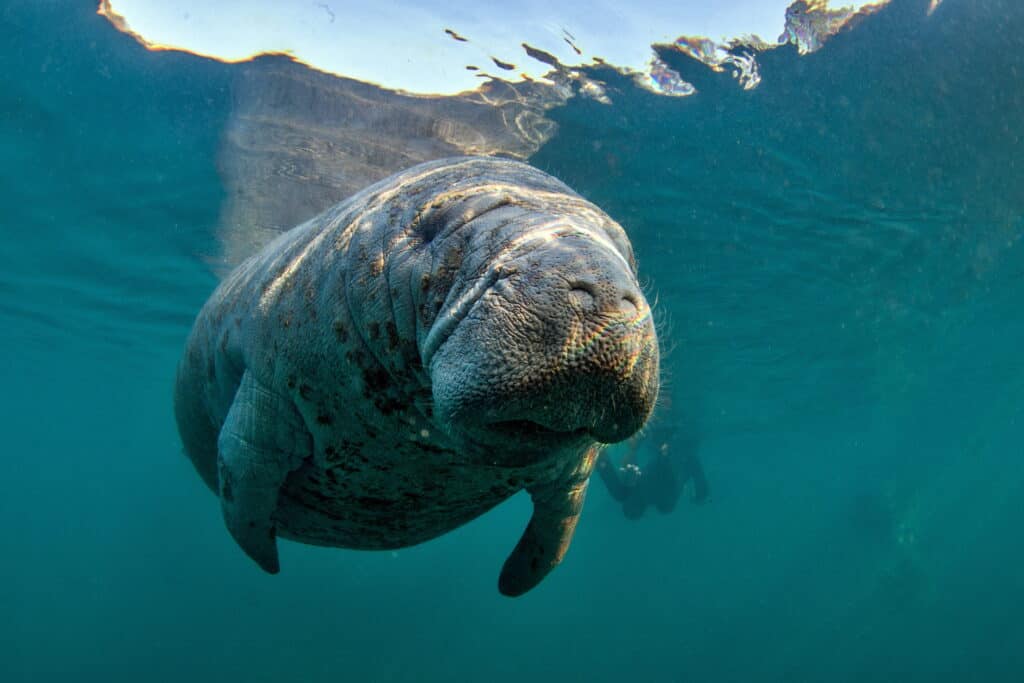
One of the rarest animals in the Panama Canal is the West Indian Manatees. As a result, conservation efforts have been put in place over the last two decades to increase their numbers in the area.
©Tomas Kotouc/Shutterstock.com
One of the rarest animals in the Panama Canal is the West Indian Manatees. As a result, conservation efforts have been put in place over the last two decades to increase their numbers in the area. The best chance you have of seeing one of these incredible creatures is by jungle boat trip along the Panama Canal and into Lake Gatun. Manatees were initially introduced to Lake Gatun in 1964 to aid vegetation growth.
Brown Pelican
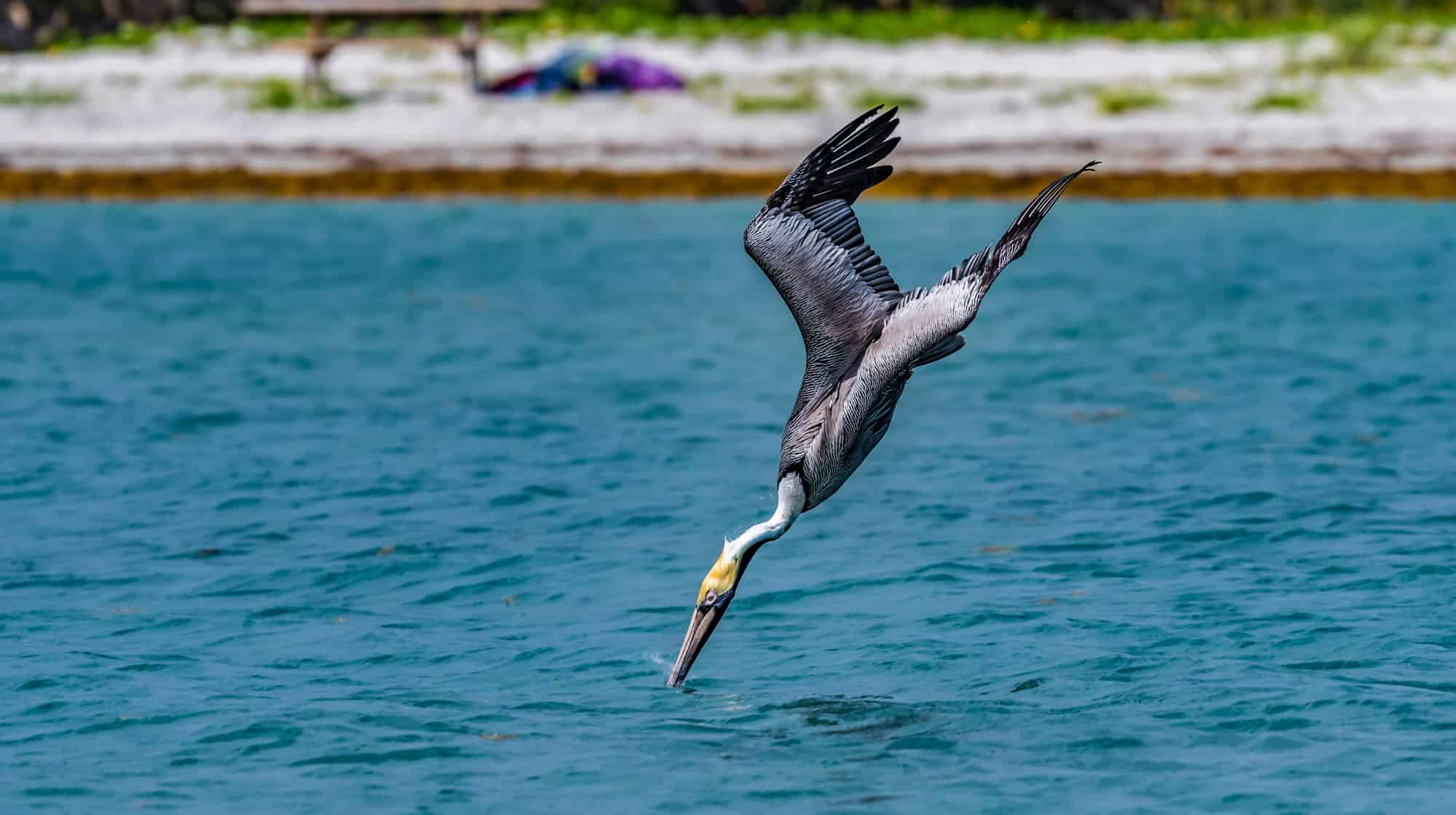
Brown Pelicans are easy to spot on the shore of the Panama Canal because they live in colonies and nest on the ground.
©mark smith nsb/Shutterstock.com
The brown pelican thrives in coastal, shallow waters, making the Panama Canal a perfect habitat for them. These pelicans plunge-dive into the water to prey on shrimp and fish. Brown Pelicans are easy to spot on the shore of the Panama Canal because they live in colonies and nest on the ground.
Blue-footed Boobys
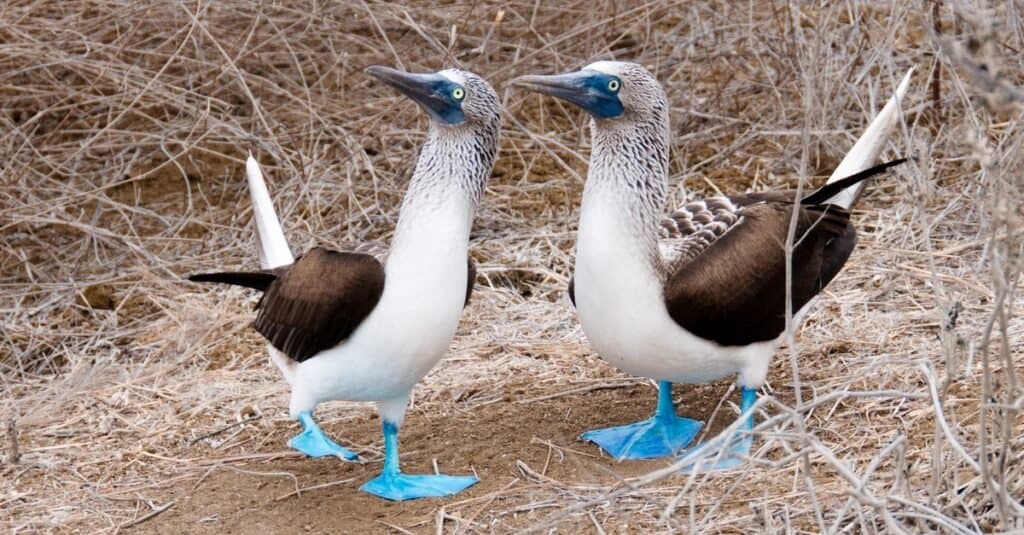
While they are probably the most famous inhabitants of the Galapagos Islands, the Blue-footed Booby is not native to the islands and also occurs in several areas throughout the Americas.
©tamara bizjak/Shutterstock.com
These birds occur in various habitats, from the dense tropical canopies of Panama to the Galapagos’s volcanic islands. While they are probably the most famous inhabitants of the Galapagos Islands, the Blue-footed Booby is not native to the islands and also occurs in several areas throughout the Americas. Male Boobies love to show off their blue feet when courting a female and are known as “lords of the dance.”
Panamanian Tamarin
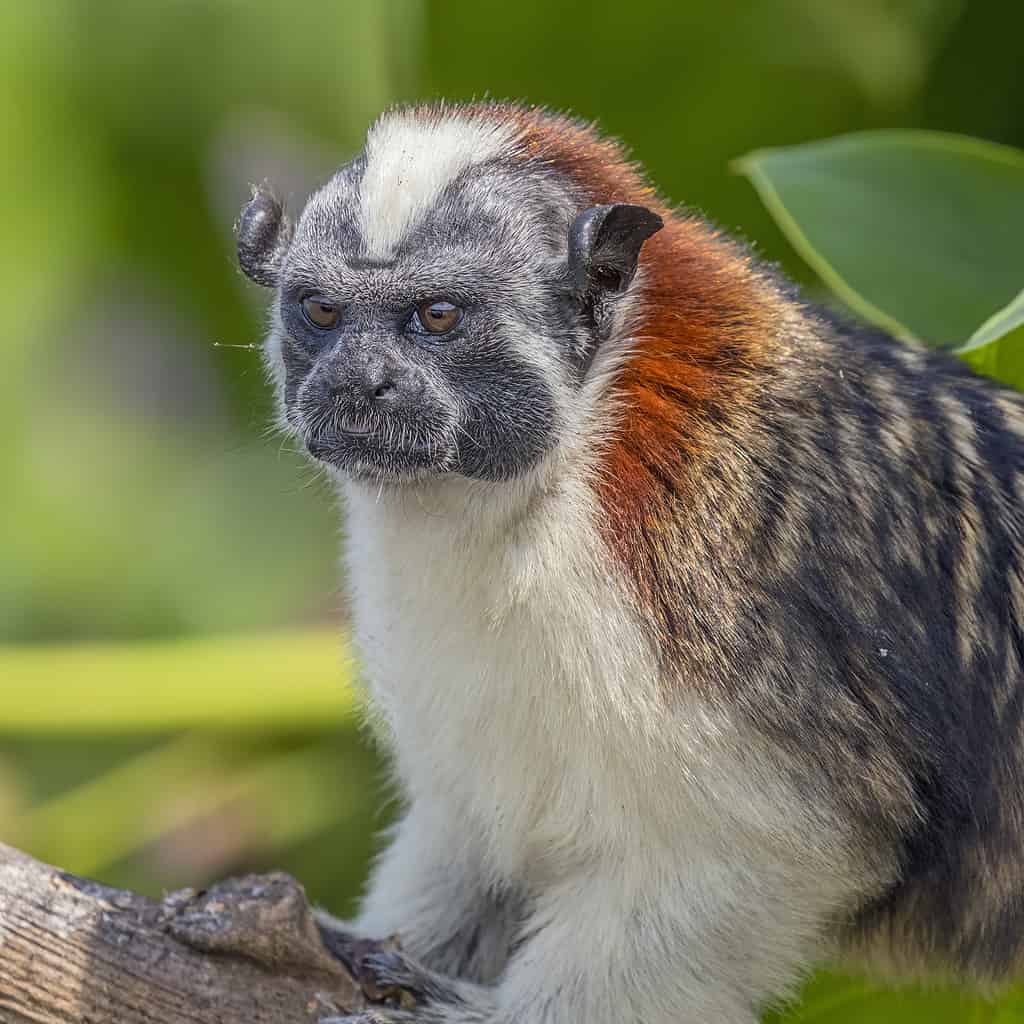
These monkeys only occur in Columbia and Panama and are more commonly known as the Geoffroy’s tamarin. However, they flourish in both countries due to their significantly short gestation period.
The Panamanian tamarin thrives in groups of 5 to 10 individuals and is one of the most common species of primates to live along the Panama Canal. These monkeys only occur in Columbia and Panama and are more commonly known as the Geoffroy’s tamarin. However, they flourish in both countries due to their significantly short gestation period. Surprisingly, these primates thrive in areas with moderate human populations, like secondary forests where the primary forest has been destroyed for agriculture.
Green Iguanas

Green Iguanas are most at home in the forest of Panama and spend most of their time feeding on plants and flowers out in the open, so sightings occur often.
©Vinod Ulahannan/iStock / Getty Images Plus via Getty Images
One of the scariest characters on the Panama Canal is the Green Iguana. However, they are only scary because of their appearance and movements, with their threatening spikes and lightning speeds. But, in actuality, these iguanas have a very calm and docile demeanor. In fact, they are popular exotic pets because they avoid conflict. Unfortunately, they don’t do well in captivity but can live up to 20 years in the wild. They are most at home in the forest of Panama and spend most of their time feeding on plants and flowers out in the open, so sightings occur often.
Thank you for reading! Have some feedback for us? Contact the AZ Animals editorial team.








